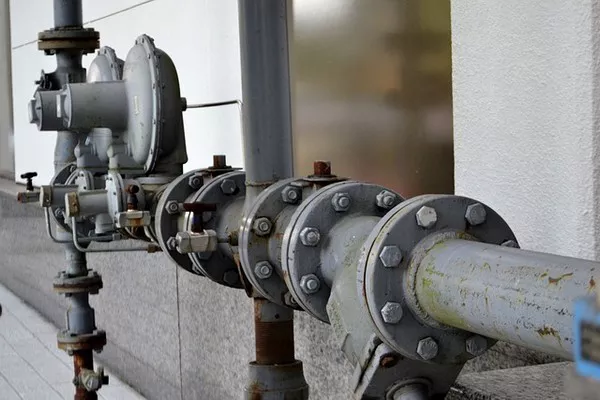The treatment of wastewater is a crucial aspect of environmental management, aimed at reducing pollutants in water before it is discharged into natural water bodies or reused. Among the various methods employed, anaerobic treatment stands out due to its efficiency, economic viability, and environmental benefits. This article delves into the principles, processes, advantages, and applications of anaerobic treatment of wastewater, providing a comprehensive understanding of this critical technology.
Principles of Anaerobic Treatment
Anaerobic treatment involves the breakdown of organic matter in wastewater in the absence of oxygen. This process is facilitated by a consortium of microorganisms that degrade organic pollutants through a series of biochemical reactions, ultimately producing biogas—a mixture of methane (CH4) and carbon dioxide (CO2)—and stabilized sludge.
The process occurs in four main stages:
Hydrolysis: Large organic molecules such as proteins, carbohydrates, and fats are broken down into simpler soluble compounds by extracellular enzymes produced by hydrolytic bacteria.
Acidogenesis: The soluble compounds are further converted into volatile fatty acids (VFAs), alcohols, hydrogen, and carbon dioxide by acidogenic bacteria.
Acetogenesis: VFAs and alcohols are converted into acetic acid, hydrogen, and more carbon dioxide by acetogenic bacteria.
Methanogenesis: Finally, methanogenic archaea convert acetic acid, hydrogen, and carbon dioxide into methane and water.
These stages work synergistically to degrade complex organic pollutants, resulting in clean effluent and valuable by-products.
Types of Anaerobic Treatment Systems
Several types of anaerobic treatment systems are utilized depending on the nature and volume of the wastewater, as well as the specific requirements of the treatment process. Some common systems include:
Anaerobic Lagoons: Large, shallow ponds where wastewater is stored and treated anaerobically over several weeks. They are simple and cost-effective but require significant land area.
Anaerobic Digesters: Enclosed tanks where wastewater is treated under controlled conditions, enhancing the rate of anaerobic digestion. These include Continuous Stirred Tank Reactors (CSTRs), Upflow Anaerobic Sludge Blanket (UASB) reactors, and Expanded Granular Sludge Bed (EGSB) reactors.
Anaerobic Filters: Fixed-film reactors where wastewater flows through a medium colonized by anaerobic microorganisms. They provide high surface area for microbial growth, improving treatment efficiency.
Anaerobic Membrane Bioreactors (AnMBRs): Combining anaerobic digestion with membrane filtration, these systems provide excellent effluent quality and are effective for treating high-strength wastewater.
Advantages of Anaerobic Treatment
Anaerobic treatment offers several advantages over aerobic processes, making it a preferred choice in many scenarios:
Energy Efficiency: Unlike aerobic processes that require continuous aeration, anaerobic treatment operates without oxygen, significantly reducing energy consumption. Moreover, the biogas produced can be captured and utilized as a renewable energy source, further enhancing energy efficiency.
Lower Sludge Production: Anaerobic processes generate less biological sludge compared to aerobic processes, reducing the need for sludge handling and disposal.
Resource Recovery: The biogas produced is rich in methane, which can be used for generating electricity and heat, contributing to energy recovery and sustainability.
High Organic Loading Rates: Anaerobic systems can handle high-strength wastewater with high concentrations of organic pollutants, making them suitable for industrial wastewater treatment.
Cost-Effectiveness: Due to lower energy requirements and reduced sludge management costs, anaerobic treatment is often more economical than aerobic treatment, especially for large-scale operations.
Applications of Anaerobic Treatment
Anaerobic treatment is widely applied across various sectors due to its versatility and efficiency. Some key applications include:
Municipal Wastewater Treatment: While traditionally more common for industrial wastewater, anaerobic processes are increasingly being integrated into municipal wastewater treatment plants, especially in regions where energy conservation is a priority.
Industrial Wastewater Treatment: Industries such as food and beverage, pulp and paper, pharmaceuticals, and petrochemicals produce high-strength wastewater that is effectively treated using anaerobic systems. These systems help industries comply with stringent discharge regulations while recovering energy.
Agricultural Waste Management: Anaerobic digestion is extensively used in treating livestock manure and agricultural residues, reducing greenhouse gas emissions and producing biogas for on-farm energy needs.
Organic Solid Waste Treatment: Anaerobic digestion is also employed in the treatment of organic solid waste, such as food waste and sewage sludge, converting waste into biogas and nutrient-rich digestate that can be used as fertilizer.
Challenges and Limitations
Despite its advantages, anaerobic treatment faces certain challenges and limitations that need to be addressed to optimize its performance and broaden its application:
Start-Up Time: Anaerobic systems often require longer start-up periods compared to aerobic systems, as the growth rate of anaerobic microorganisms is slower.
Temperature Sensitivity: Anaerobic processes are sensitive to temperature fluctuations. Maintaining optimal temperatures is crucial for efficient treatment, especially in colder climates.
Nutrient Removal: While anaerobic treatment is effective for organic matter degradation, it is less efficient in removing nutrients such as nitrogen and phosphorus, often necessitating additional treatment steps.
Toxicity and Inhibition: Certain industrial wastewaters may contain toxic compounds that inhibit anaerobic microorganisms, requiring pretreatment or careful monitoring to avoid process disruption.
See Also WHAT IS GRIT IN WASTEWATER TREATMENT
Future Prospects
The future of anaerobic treatment looks promising, with ongoing research and technological advancements aimed at addressing existing challenges and enhancing the process’s efficiency and applicability. Innovations such as the integration of anaerobic and aerobic processes, development of robust microbial consortia, and improvement in reactor designs are paving the way for more resilient and efficient anaerobic treatment systems.

